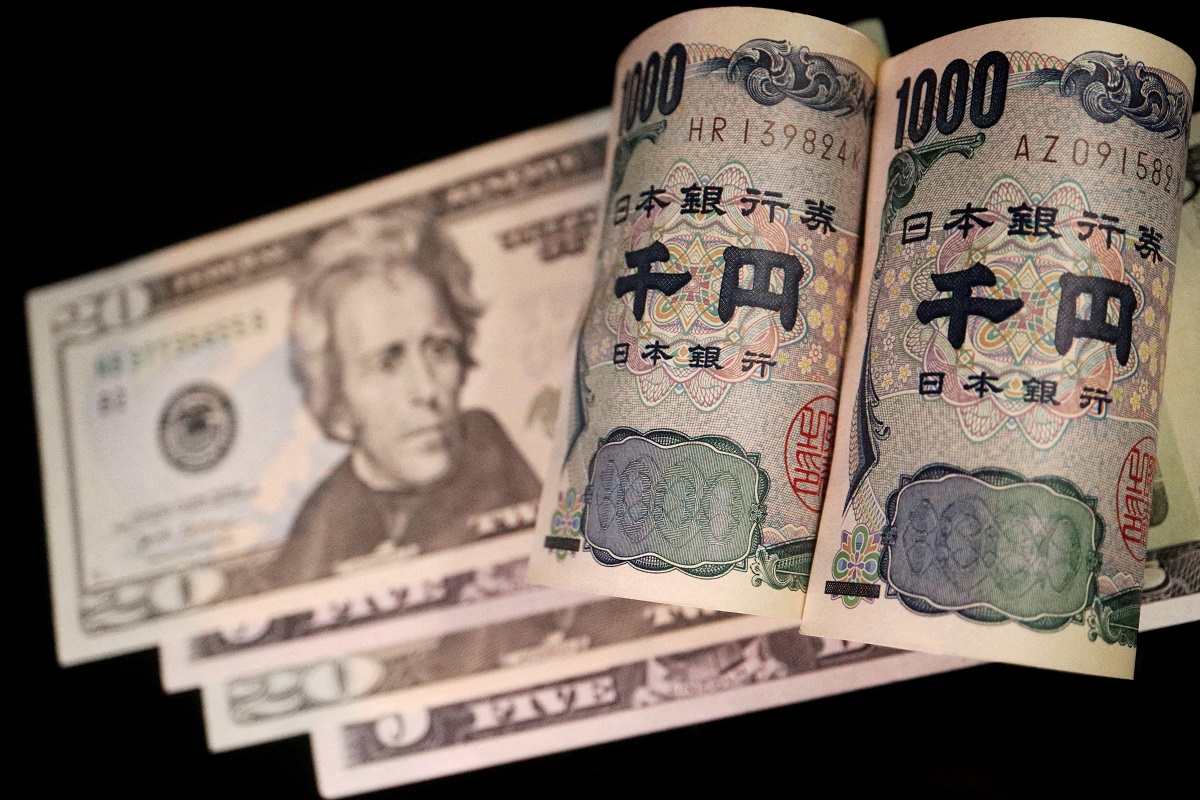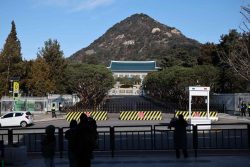
Banknotes of Japanese yen and U.S. dollar are seen in this illustration picture taken September 23, 2022.
14:56 JST, March 27, 2024
SINGAPORE (Reuters) – Japan raised interest rates for the first time since 2007 this month in a move that marked a historic shift in monetary policy.
Yet the currency fell and now Japanese officials have issued their strongest warning in years of intervention to prop it up.
It traded at 151.97 per dollar on Wednesday, its weakest since 1990. A weaker yen is a boon for Japanese exporters’ profits but can squeeze households by increasing import costs.
Here’s what’s behind the selling:
SELL THE FACT
News reports, including from Reuters, foreshadowed the Bank of Japan’s landmark exit from negative interest rates in the lead-up to the decision. So did economic conditions, with sharply rising wages suggesting sustainable inflation and less need for subzero rates or policies to cap government bond yields.
“The event was too well anticipated, so the market was just too well priced going into the event,” said Patrick Hu, a G10 currency trader at Citi in Singapore who focuses on the yen.
The yen fell more than 1% the day of the announcement.
CARRY ON
The yen is the lowest-yielding G10 currency, making it ideal for carry trades, in which an investor borrows in a currency with low interest rates and invests the proceeds in a higher-yielding currency.
With the BOJ decision and other central bank “event risks” out of the way, investors who had trimmed such trades have been rebuilding their positions. Investors are betting that Japanese rates are not going to be rising quickly from here, effectively extending the life of yen carry trades.
Short-term Japanese rates are held below 0.1% and only about 20 further basis points in hikes are priced this year.
The U.S. Fed funds rate is 5.25-5.5% and a 25 bp cut isn’t fully priced until July. The U.S.-Japan government bond yield gap at the 10-year tenor is almost 350 bps.
FLOW
The rates picture is also keeping big Japanese investors’ cash abroad, where it can earn better returns, depriving the yen of support from repatriation flows. Japanese investors keep about $3 trillion in foreign bonds and yen trades.
Japan Post Bank and Japan Post Insurance, among the largest financial firms, told Reuters their portfolios won’t be radically changing in response to the BOJ’s policy shift.
INTERVENTION RISK
The yen’s dollar exchange rate has broken the level that drew intervention in 2022. Markets seem leery of testing 152 next, though authorities have stressed they aren’t targeting particular levels but rather speculative moves.
“Many seem to think a ‘line in the sand’ against further yen weakness sits near the 152 area when intervention occurred in late 2022,” said HSBC analysts in a note to clients.
“The current situation is trickier, especially when the U.S. dollar is not in a bubble-like state as in the period of October/November 2022. So, the risk is that Japan’s (finance ministry) tries to intervene to support the yen but with very limited success. This could create heightened uncertainty for the yen and other currencies.”
"News Services" POPULAR ARTICLE
-

American Playwright Jeremy O. Harris Arrested in Japan on Alleged Drug Smuggling
-

Japan’s Nikkei Stock Average as JGB Yields, Yen Rise on Rate-Hike Bets
-

Japan’s Nikkei Stock Average Licks Wounds after Selloff Sparked by BOJ Hike Bets (UPDATE 1)
-

Japan’s Nikkei Stock Average Buoyed by Stable Yen; SoftBank’s Slide Caps Gains (UPDATE 1)
-

Japanese Bond Yields Zoom, Stocks Slide as Rate Hike Looms
JN ACCESS RANKING
-

Keidanren Chairman Yoshinobu Tsutsui Visits Kashiwazaki-Kariwa Nuclear Power Plant; Inspects New Emergency Safety System
-

Tokyo Economic Security Forum to Hold Inaugural Meeting Amid Tense Global Environment
-

Imports of Rare Earths from China Facing Delays, May Be Caused by Deterioration of Japan-China Relations
-

University of Tokyo Professor Discusses Japanese Economic Security in Interview Ahead of Forum
-

Japan Pulls out of Vietnam Nuclear Project, Complicating Hanoi’s Power Plans























